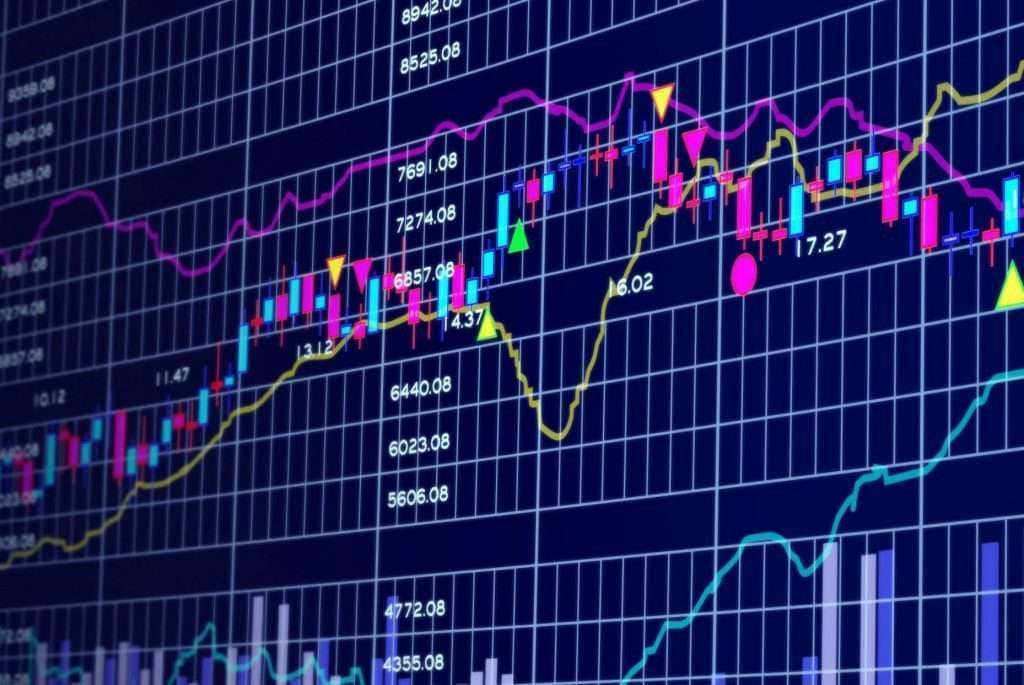How to Pick Stocks Using Fundamental and Technical Analysis
Content
Being an engineer i have no knowledge in finance but i want to make career as a financial modeler ,please provide me the link from where should i start the course because i have now https://xcritical.com/ life time access . Select those tools that fit your trading requirements and strategies. You need the right share trading account with the required support, functionality, and cost.
Equity portfolios following a consistent philosophy focused on long-term investment in growing companies with high-quality fundamentals. The Firm believes diversified portfolios of the stocks of companies meeting its quality-growth criteria, purchased at reasonable prices, offer superior risk-adjusted returns over the long term. Trend analysis is a technique used in technical analysis that attempts to predict future stock price movements based on recently observed trend data. If you like using charts and data to uncover trends in stocks and other investments, learn more here about technical analysis. The debate over fundamental vs technical analysis can be polarizing. The fundamental analyst thinks technical analysis is mumbo jumbo and just drawing whatever lines fit the result you want to demonstrate.
Fundamental vs Technical Analysis
Since technical analysts don’t believe in the concept of intrinsic worth, the charts are enough for them to make decisions on the spot. Technical analysis for stocks uses data on past movements in stock price and overall market sentiment in an attempt to predict the future change in a stock’s price. Making correct assumptions about the future is part of successful investing, so it’s no surprise that some investors are drawn to technical analysis to make investment decisions. Fundamental analysis is used for long-term investments, while technical analysis is used for short-term investments.

A downtrend is defined as a sequence of lower highs and lower lows. To draw a downtrend line, a technician draws a line connecting the highs on the price chart. Relative strength analysis is based on the ratio of the prices of a security and a benchmark and is used to compare the performance of one asset with the performance of another asset.
Identifying chart patterns with technical analysis
These results showed the weakness of moving average techniques in predicting price behavior. They also suggested that if transaction costs are negligible, technical analysis becomes a viable alternative, indicating that under certain conditions the markets are not efficient. Professionals use charts and macro-economic indicators, as well as other elements such as volatility, pricing movements and volumes traded to model the price movements of indices and stocks. This form of analysis is often used for short-term trading as it attempts to chart short-term price movements. Fundamental analysis predicts the likely performance of an equity investment by assessing the underlying profitability and outlook of a corporate.
Technical analysis doesn’t concern itself with things like revenues, cash flows or debts. Fiscal policies, such as budget planning, government spending and taxation encourage or discourage productivity and spending in the economy and therefore have a real impact on the markets. For example, the 2010 tsunami in Japan had a debilitating impact on the region’s manufacturing sector, which caused significant disruption to the production of mobile technology and automakers. At the same time, the tsunami also increased expensive insurance claims which weighed on the balance sheets of major insurance firms. Natural disasters, such as flooding, hurricanes and tsunamis can have a major impact on the fundamental strength and weakness of an asset. Because of this, traders will watch the actions of central banks avidly, trying to predict what they might do next.
#LUCE An example of how a basic and proven technical technique can improve your returns; enhancing results of your initial fundamental analysis.
Works more effectively with liquid stocks having lower Buying and Selling costs.#investing #technical_analysis pic.twitter.com/9vF6h3HTjJ— Slow Dough (@Whole_wit) October 25, 2022
In its weak form, EMH states that it is not possible to obtain above-average returns from the study of past prices (Malkiel and Fama 1970, p. 383), implying that a price series has a unit root. The tools used by TA can provide an index of resistance and support as well. Indicators include the Relative Strength Index , the Moving Average Convergence Divergence , and the Average Directional Index , among others. These indicators seek to estimate patterns of future behavior and predict buy and sell opportunities solely from the previously verified pricing of assets.
MACD signals caution for stocks
In the short term, price action is affected by several factors that fundamental analysis cannot pick up. The effects of market sentiment, market psychology, and supply and demand can all be observed by looking at a chart. Technical analysis can be used to improve timing, and to trade strategies appropriate to market conditions. Some investors take a combined approach, using fundamental analysis to decide what stocks to buy and technical analysis to decide when to buy or sell them. This approach can help identify optimal and entry points once an investor has identified fundamentally appealing stocks. Technical analysts typically use detailed charts displaying high, low, open, and closing prices for each day, along with trading volume.
Though both approaches seem at opposite ends, if you take the value of both into account you can benefit through the blend. On the other extreme, technical analysis tends to shun the fundamental factors of a company; and instead focuses on price and volume. This text is informative in nature and should not be considered an investment recommendation.
- Fibonacci retracements are used to identify good, low-risk trade entry points during such a retracement.
- Separately Managed AccountsAMG Funds provides access to a wide array of separate account strategies managed by a number of Affiliated Managers Group’s boutique investment managers.
- It happens due to various reasons such as declining macro-economic factors, intense pessimism across the economy, securities specific factors, over-inflation in the markets, and so on.
- Such investors typically focus on metrics such as a company’s historical and projected revenue growth rates when buying shares of relatively new companies.
- The gravestone doji’s name clearly hints that it represents bad news for buyers.
Instead, they use stock charts to identify patterns and trends that suggest what a stock will do in the future. For our research, we constructed a portfolio composed of a wide number of holdings. This approach allowed us to verify the average profitability gained through technical analysis for all assets traded in the stock market for each BRICS member country. Given these conditions, we considered an investor fundamental and technical Analysis who was investing US$10,000.00 in each asset of the country, converted at the exchange rate on June 24, 2016. A 19th-century American financial journalist named Charles Dow analyzed historical data from the American stock market, identifying patterns and cycles in stock prices. He shared his conclusions with investors in a series of 255 editorials he wrote for the newspaper he founded, the Wall Street Journal.
Key Differences Between Fundamental Analysis vs Technical Analysis
Consider a leading stock as it goes into a major topping process after a long, successful run. The adage, „Technicals break down well before fundamentals do,“ is practical wisdom when you want to keep your hard-earned gains. Stock prices are not random; they trend up, down, or horizontally .
Knew that a long time ago. So called fundamental and especially technical’ analysis of stocks has always been a lie. Its all about how much money is chasing stocks.
— Krish Pande (@pande_krish) October 15, 2022
You should consider whether you understand how CFDs work and whether you can afford to take the high risk of losing your money. CFD and Forex Trading are leveraged products and your capital is at risk. Please ensure you fully understand the risks involved by reading our full risk warning. At this point, fundamental analysis can seem a little bit daunting. There are potentially unlimited factors that could move the markets, making it tricky to decide where to look first. You might buy a stock because you expect new government regulations to boost its bottom line in the coming years, but see your investment derailed by a change of leadership before that can happen.
Pros of using technical analysis
Sentiment indicators attempt to gauge investor activity for signs of increasing bullishness or bearishness. Commonly used calculated statistical indexes are the put/call ratio, the VIX, and margin debt. From equities, fixed income to derivatives, the CMSA certification bridges the gap from where you are now to where you want to be — a world-class capital markets analyst. There is another class of technical indicators, however, whose main purpose is not so much to determine market direction as to determine market strength.

The key indicator of economic growth is Gross Domestic Product , which calculates the sum of goods and services produced within a country . It’s one of the most important indicators of economic growth and output. You could decide to make the purchase on expectations that its price might rise in value because it is in a high-growth area. Sign up for a free demo account to improve your strategies in a risk-free environment. Volatile markets give opportunities to streamline our portfolios to robust quality companies. Ensure your portfolio is ready for the next phase of the bull market.
Stop Orders: Mastering Order Types
In other words, technical analysis can be defined as a method used to determine the upcoming price of the securities on the basis of charts in order to identify the trends as well as patterns. Technical analysis is relevant for investments that are held for a shorter duration of time. Technical analysis is only concerned with the previous data, and it is used solely for trading functions. The objective of conducting a technical analysis is to identify the perfect time for entering or exiting the market. Investors who prefer fundamental analysis also rely on financial statements that are filed quarterly, as well as changes in earnings per share that do not emerge on a daily basis, like price and volume information. After all, a company cannot implement sweeping changes overnight and it takes time to create new products, marketing campaigns, and other strategies to turn around or improve a business.
The profit of a company comes down to the difference between how much amount it brings in and how much it spends on its daily upkeep. Technical analysis and fundamental analysis are two techniques for making predictions about whether prices will go up or down. Whether you’re buying stocks and bonds, real estate, or cryptocurrencies, you’re hoping to buy at a low price so someday you can sell at a higher price, earning a profit in the bargain. Shareholders who held on may have felt validated as the stock rallied from that low over the next five weeks.
Therefore, our automated trading system, by operating with and without brokerage fees, allowed us to assess the impact of transaction costs on the overall profitability of the strategies. Table1 summarizes the results of the main studies of the profitability of TA in both emerging and developed countries. Surveys were considered to provide mixed evidence if their results demonstrated that the good performance of technical analysis was not sustained after considering transaction costs.
However, none of these studies proposed a comparison of the results for groups of similar countries, so they failed to answer whether TA is profitable for emerging markets as a whole. The income statement gives a clear picture of the amount of profits a company makes. Therefore it takes into account the earnings and expenses over a set period of time.
When considering which stocks to buy or sell, you should use the approach that you’re most comfortable with. Tharavanij et al. (2015, pp. 39–40) analyzed the performance of a wide variety of technical indicators for similar Asian emerging markets, such as Malaysia, Indonesia, Singapore, and Thailand. The analysis was conducted on a risk-adjusted basis, and accounted for brokerage fees.

